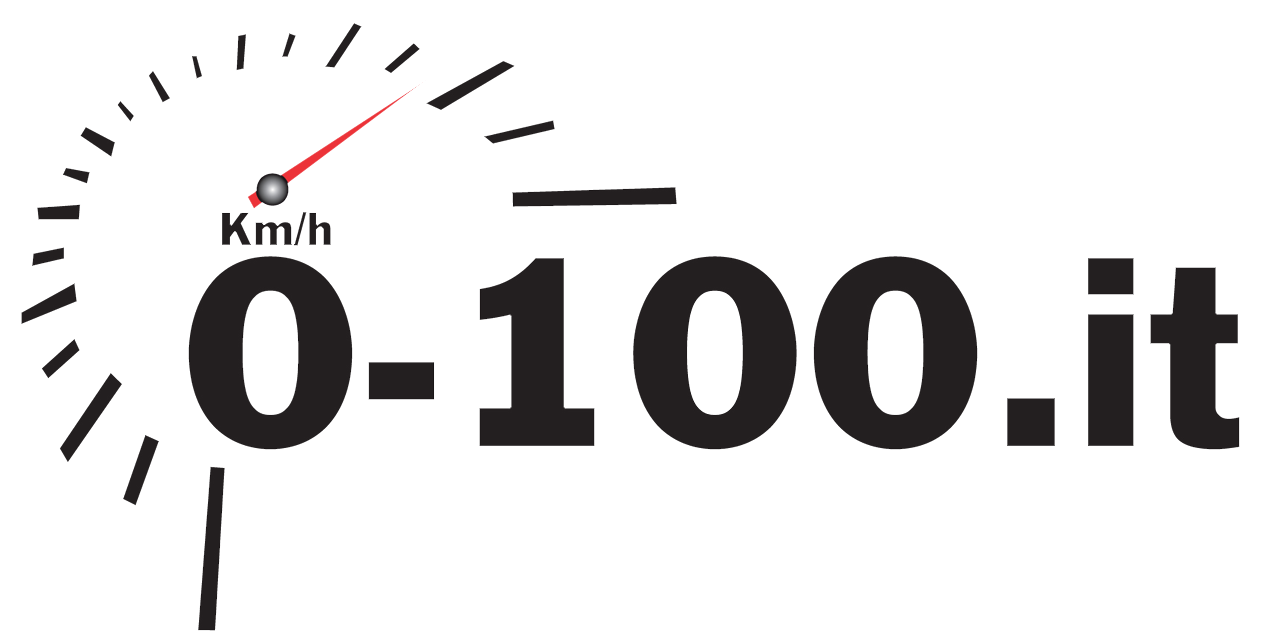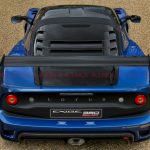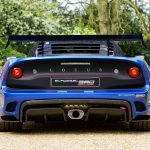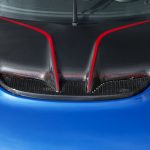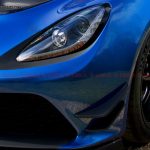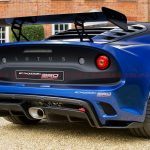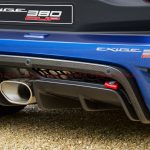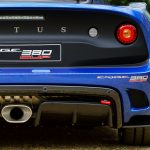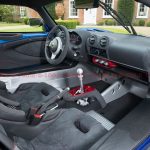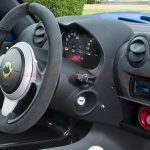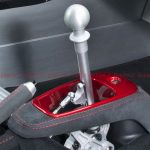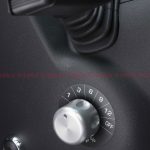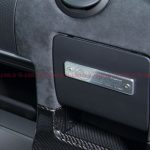NOVITA’: Lotus Exige Cup 380[:en]Lotus Exige Cup 380: road legal or for races? Both!
STRADALE O DA CORSA? ENTRAMBE! LA LOTUS EXIGE CUP 380 E’ UN GIOIELLINO PER COLLEZIONISTI FREQUENTATORI DELLA PISTA: SOLO 60 ESEMPLARI E CARATTERISTICHE MOLTO VICINE A UNA MACCHINA DA PISTA. MEGLIO LEI, PORSCHE GT3 (RIGOROSAMENTE CON CAMBIO MANUALE!) O LAMBORGHINI HURACAN PERFORMANTE?
La nuova Lotus Exige Cup 380 è la punta di diamante della gamma Exige e, forse, di tutto il listino Lotus fino a questo momento. E’ un’automobile speciale, quella che 60 anni fa si sarebbe potuta definire una perfetta Gran Turismo.
Dice, infatti, Jean-Marc Gales, CEO di Group Lotus: “Nello sviluppo della Cup 380 abbiamo potuto apportare le nostre ambizioni da brand attivo nel Motorsport in un’automobile utilizzabile tutti i giorni. Questa Exige non è solo un’automobile imbattibile punto per punto ma anche capace di correre e vincere competizioni altamente competitive. Per molti la sorpresa più grande è che si tratta di un’auto completamente omologata stradale, un risultato davvero notevole considerate le performance di cui è capace. A differenza di alcune rivali, si tratta di un’autentica vettura con cui andare da a casa in circuito, conquistare la pole position, vincere e tornare a casa. E’ straordinariamente versatile sebbene incredibilmente veloce!“.
L’Exige 380 Cup è studiata per i più assidui frequentatori di circuiti e con velleità particolarmente sportive. Senza dimenticare una particolare predilezione per i prodotti esclusivi: ne verranno prodotti, infatti, solo 60 esemplari in tutto il mondo.
UN’AUTO DA CORSA CON TARGA STRADALE
Tra i grandi brand sportivi un simile titolo, oggi, potrebbe andare a fenomeni come la Ferrari F40, la McLaren F1, le Porsche 964 Carrera RS e RS 3.8. Ma ora anche la Cup 380 ambisce “seriamente” a questa ristrettissima elite grazie a qualità davvero non comuni.
Innanzitutto uno studio aerodinamico molto complesso e rigoroso, condotto in galleria del vento e che ha portato alla definizione di un layout estetico completamente dettato da esigenze funzionali; con il risultato che alla massima velocità – 282 km/h – si genera un carico verticale di ben 200 kg.
Vi è poi l’importantissima variabile peso. La Exige Cup 380 pesa 1.057 kg a secco, un risultato determinato dal largo utilizzo di vetroresina e fibra di carbonio per carrozzeria ed elementi aerodinamici, cura dimagrante per gli interni, allestimento ridotto all’osso (per risparmiare peso non sono presenti, infatti, nemmeno i tappetini!). In aggiunta, il telaio viene irrigidito con una gabbia rollbar integrale.
MOTORE E TRASMISSIONE
Il motore è il noto V6 3.5 di origina Toyota, sovralimentato con compressore: eroga 375 Cv a 6.000 giri e 410 Nm di coppia a 5.000 giri. La trasmissione (trazione posteriore) si avvale di cambio meccanico a 6 marce con rapporti corti.
L’elettronica di bordo è stata studiata per tutte le esigenze: in condizioni normali l’Exige 380 dispone di ESP e Traction Control ma entrambi sono programmabili a piacere. L’ESP dispone di quattro livelli di intervento (Drive, Sport, Race e Off); il Traction Control, invece, è regolabile secondo sei logiche di funzionamento (gestibili solo a ESP disattivato): da 1% a 12% e disattivato.
TELAIO
Il telaio prevede ammortizzatori Nitron regolabili in due posizioni, barre antirollio Eibach registrabili, pneumatici da 215/45 ZR17 davanti e 285/30 ZR18 dietro, impianto freni fornito dalla AP Racing.
Il catalogo accessori permette di personalizzare ancora di più scegliendo tra impianto di scarico in titanio (toglie 10 ulteriori chili di peso), gabbia roll-bar omologata FIA, sedile da competizione con cintura a 6 punti, estintore, eliminazione degli airbag.
PREZZO E PRESTAZIONI
La Lotus Exige Cup 380 costa, in Germania, 109.900 euro. Si può avere in cinque colori di carrozzeria: Essex Blue, Metallic White, Metallic Silver, Metallic Grey and Metallic Black. Secondo il costruttore scatta sullo 0-100 in 3″6 e tocca 282 km/h.
THE NEW LOTUS EXIGE CUP 380 IS THE PUREST MANIFESTATION YET OF THE COMPANY’S CUP CONCEPT FOR SPORTS CARS. ASSURING ITS STATUS AS ONE OF LOTUS’ MOST COLLECTABLE ROAD CARS IT PROVIDES THE PERFECT BALANCE BETWEEN FULLY TYPE APPROVED ROAD CAR AND GENUINE RACE CAR. KEY TO THE EXIGE CUP 380 REACHING ITS LOW WEIGHT OF 1,057 KG IS THE COMPREHENSIVE ADOPTION OF CARBON FIBRE AND EXTREME ENGINEERING.
Jean-Marc Gales, CEO, Group Lotus plc said, “Developing the Cup 380 has allowed us to indulge our motorsport ambitions on a car that can be used and enjoyed every single day. This is an Exige that’s not just unbeatable point-to-point but also capable of winning highly competitive races. The biggest surprise for many is that it’s fully road legal – a considerable achievement considering the car’s performance capabilities. Unlike some rivals’ cars, this is something that really can drive to a track, set the fastest lap and take the win, before heading home. It’s supremely usable, yet outrageously fast.”
Five hand finished paint options are available, including Essex Blue, Metallic White, Metallic Silver, Metallic Grey and Metallic Black. Further accentuating its shape, a unique red highlight line defines the Exige’s front access panel, while key details, including the front canard wings, are finished in matt black. Coordinating wheels, spoiler uprights and mirror caps in red, silver or black contrast with the main paint colour, and the whole car is finished with unique Cup 380 badging.
To harness the huge hike in downforce, and provide increased mechanical grip the car was developed through a high skilled wind tunnel aerodynamic process. This allows this road-going Exige to deliver up to 200 kg of aerodynamic downforce at a top speed of 175 mph. An integral part of the car’s aerodynamic prowess, the high-gloss, hand-made carbon fibre components include new front splitter, front access panel, bargeboards, roof, diffuser surround, new larger aperture air-intake side pods, a new one-piece tailgate and a straight-cut high efficiency motorsport derived rear wing.
Inside the Exige Cup 380, the carbon continues with visible-weave, handmade sections including beautifully detailed carbon race seats and door sills as standard. Cumulatively these composites contribute to the Exige Cup 380’s low weight, but every part of the car has been considered, even down to the removal of the boot carpet, to reduce mass. In addition to the Exige’s strong, stiff and durable aluminium chassis architecture, the Cup 380 comes with a T45 steel roll over bar as standard.
Packing the same 3.5-litre supercharged V6 engine as the Exige Race 380, the new Exige Cup 380 boasts 375 hp at 6,700 rpm and 410 Nm (302 lbft) of torque at 5,000 rpm. Available as standard with a close-ratio, six-speed manual transmission, the Exige range features Lotus’ now famous open-gate manual gearbox design.
There are four user selectable ESP modes (Drive, Sport, Race and Off). Sport, Race and Off increase throttle response. Cup 380 includes a variable traction control function which is linked directly to the ECU and allows the amount of wheel slip to be set by the driver. The six-position rotary switch is located on the steering column and is only available with ESP switched off, with the percentage of target wheel slip from 1% to 12% in five settings and “off”, displayed via the instrument cluster.
Owners of the Exige Cup 380 can configure the set-up, thanks to the Nitron two-way adjustable dampers and Eibach adjustable front and rear anti-roll bars fitted as standard. The substantial Michelin Pilot Sport Cup 2 tyres (285/30 ZR18 rear and 215/45 ZR17 front) are fitted to ultra-lightweight forged alloy wheels, available in red, black or silver as standard. Stopping power is provided by AP Racing forged, four-piston brake calipers and grooved performance two-piece brake discs.
The Exige Cup 380 is available as a limited production run of only 60 cars and as a coupe only. It can be ordered now, priced £83,000 including VAT (UK) and €109,900 (Germany). With a purity of drive unheard of in road cars, and a power-to-weight ratio of 355 hp per tonne, it delivers genuine race pace, with 0-60 mph in 3.4 seconds (0-100 km/h in 3.6 seconds) and top speed of 175 mph (282 km/h).
